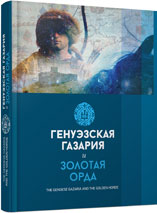Пифосы из археологических комплексов Таврики XIV—XV вв.
Pithoi from Archeological Complexes of the 14th—15th Centuries in the Crimea
Author(s): Iryna B. Teslenko
Subject(s): History, Archaeology, Middle Ages, 13th to 14th Centuries, 15th Century
Published by: Издательский дом Stratum, Университет «Высшая антропологическая школа»
Keywords: Crimea; 14th—15th century; Medieval archaeological complexes; ceramic ware; pithos; Greek and Byzantine traditions
Summary/Abstract: Studies of 14th — 15th cc. complexes on medieval sites in the Crimea (in its southern part mainly) documented presence of three groups of pithoi dated by different periods. The earliest of them were vessels of group I — locally produced thick red clay barrels. By the 15th c. they could have been in use for 500—600 years. One should not exclude possible early medieval traditions of manufacturing such vessels conserved in some regions of Taurica. Imported pithoi of group II became predominant later. They were produced and used for not more than 250—300 years. Further studies must be carried out to identify the region where vessels with such morphological characteristics originated from. The latest to appear were the so called wine jars of group III. They existed for not more than 150—180 years. Their detailed chronology and origin of forms require further investigation.It should be mentioned that the Greek-Byzantine traditional manufacturing and use of pithoi were common in the Crimea in 14th — 15th cc., and most of them seemed to have been used predominantly in wine-making. Relics of these traditions can be still marked in ethnography of peoples living in wine-making regions — Caucasus, Balkans, Pyrenees, etc. However, the Crimea lost these traditions after the Ottoman conquest.
Book: Генуэзская Газария и Золотая Орда
- Page Range: 125-163
- Page Count: 39
- Publication Year: 2015
- Language: Russian
- Content File-PDF

